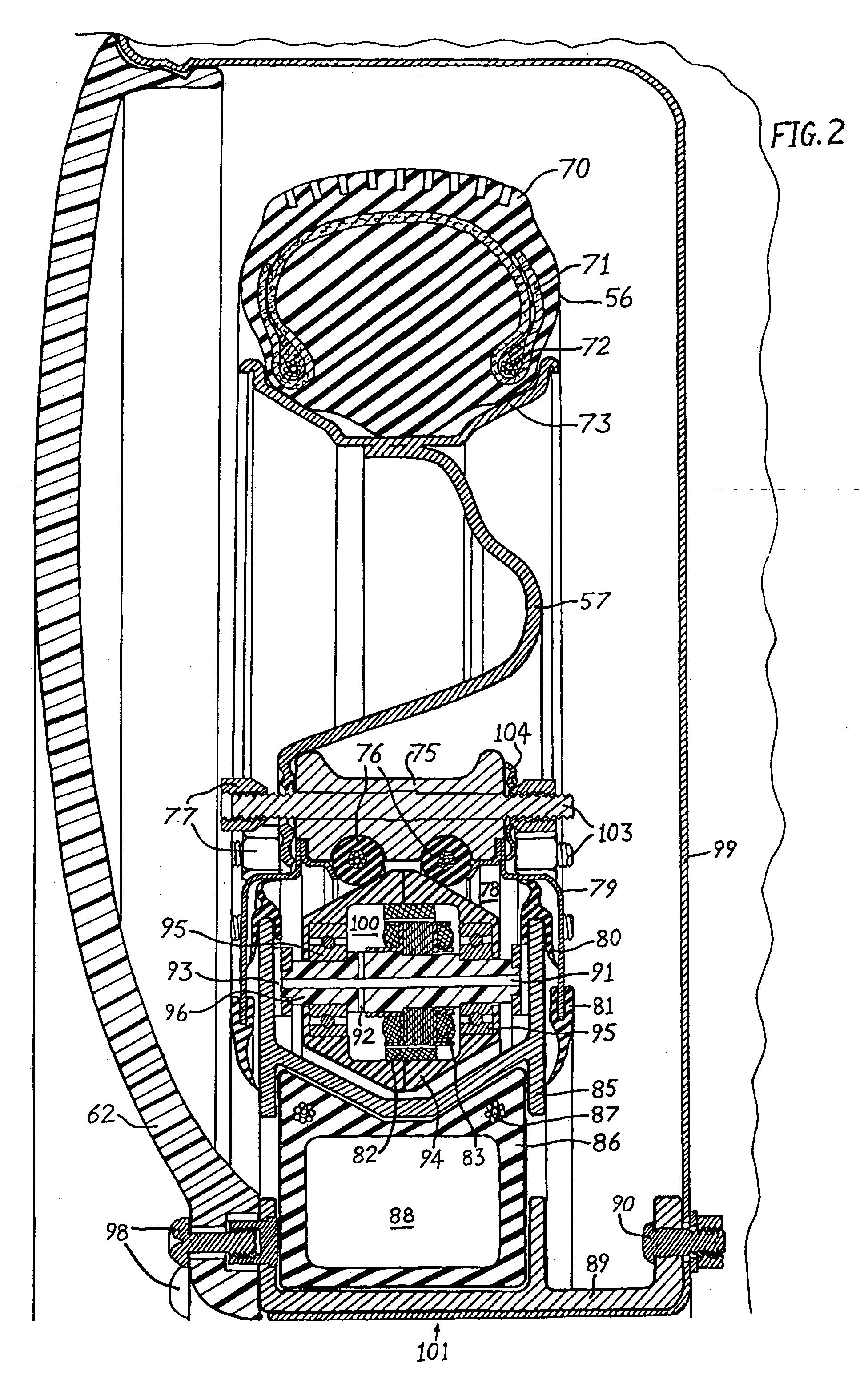Two-parallel-wheeled electric motor vehicle with a provision for connecting electromagnetic holonomic wheels in tandem
a technology of electromagnetic holonomic wheels and electric motor vehicles, which is applied in the direction of bicycles, transportation and packaging, and unicycles. it can solve the problems of limiting the number of motors used to drive each wheel, reducing the design stability of the design, and reducing the use of vehicles. it achieves the effect of increasing the diameter of the wheels and ensuring the design stability
- Summary
- Abstract
- Description
- Claims
- Application Information
AI Technical Summary
Benefits of technology
Problems solved by technology
Method used
Image
Examples
Embodiment Construction
[0035] The first version of the present invention is described in detail with the aid of FIG. 1 through FIG. 4. The total height of the vehicle in FIG. 1 is nearly 1370 mm. In this present form, it is designed to accommodate two persons with some luggage space at the back. The seats are marked 65 in FIG. 1, FIG. 3 and FIG. 4. Batteries 50 in FIG. 1 are placed below seats 65. There is a provision to keep eight 100AH 12V lead acid batteries. The total weight of the batteries is approximately 240 kg. The position of batteries 50 keep the center of gravity of the vehicle very low; this, coupled with the eccentric loading on the vehicle, provides stability to the vehicle, in spite of its having only two parallel wheels. The top and front sides of the battery enclosure have to be strong and fully linked with the structure of the shell and, at the extremities, with the direct-drive rim motors: So that, in case of an accidental collision, the batteries 50 do not damage the legs of the occup...
PUM
 Login to View More
Login to View More Abstract
Description
Claims
Application Information
 Login to View More
Login to View More - R&D
- Intellectual Property
- Life Sciences
- Materials
- Tech Scout
- Unparalleled Data Quality
- Higher Quality Content
- 60% Fewer Hallucinations
Browse by: Latest US Patents, China's latest patents, Technical Efficacy Thesaurus, Application Domain, Technology Topic, Popular Technical Reports.
© 2025 PatSnap. All rights reserved.Legal|Privacy policy|Modern Slavery Act Transparency Statement|Sitemap|About US| Contact US: help@patsnap.com



